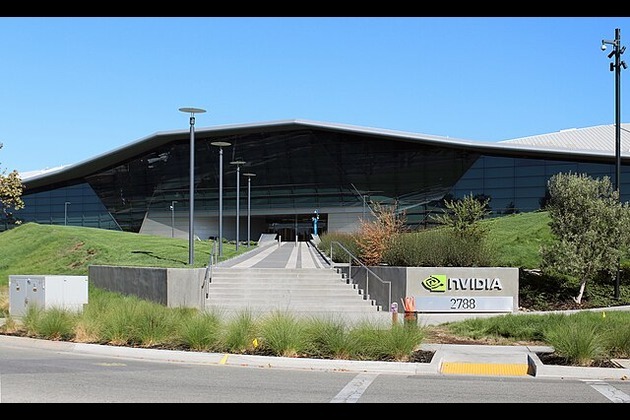Which of monocrystalline and polycrystalline solar panels is better for you?
PRwire360
09 Feb 2023, 23:38 GMT+10
When evaluating solar panels for your photovoltaic (PV) system, you will come across two primary panel types: monocrystalline solar panels (mono) and polycrystalline solar panels (poly). Both types of solar panels generate energy from the sun, but there are significant distinctions between them.

What are the differences between monocrystalline and polycrystalline solar panels?
Both monocrystalline and polycrystalline solar panels perform the same purpose in a solar PV system, and the science behind them is straightforward: they convert solar energy into electricity. Additionally, they are both composed of silicon, which is utilized in solar panels due to its abundance and durability. Numerous manufacturers of solar panels create both monocrystalline and polycrystalline panels.
There are important distinctions between monocrystalline and polycrystalline solar panels that you should grasp before making your final solar buying selection. The primary distinction between the two systems is the type of silicon solar cell they employ: monocrystalline solar panels utilize solar cells built from a single crystal of silicon, whereas polycrystalline solar panels use solar cells made from several silicon fragments melted together.
Monocrystalline solar panels
A monocrystalline solar panel is simply a solar panel comprised of monocrystalline solar cells, sometimes known as "wafers." Wafers made from a single silicon crystal shaped into a cylinder are monocrystalline. Although these panels are often considered luxury solar products, their primary benefits are better efficiency and sleeker appearance. Since a monocrystalline cell consists of a single crystal, the electrons that generate an electric current have greater space to move. In consequence, monocrystalline solar cells are more efficient than polycrystalline solar cells. You will require fewer monocrystalline panels for your roof to generate the same amount of kWh as other panels, but they are more expensive per panel.
Since a monocrystalline cell consists of a single crystal, the electrons that generate an electric current have greater space to move. In consequence, monocrystalline solar cells are more efficient than polycrystalline solar cells.
Polycrystalline solar panels
Silicon is used to construct polycrystalline solar panels. However, producers combine several shards of silicon to form the panel's wafers rather than employing a single silicon crystal. Polycrystalline solar cells are also known as multi-crystalline or multiple-crystal silicon.
Polycrystalline solar panels often have lower efficiency than monocrystalline cell alternatives due to the greater number of crystals in each cell, which restricts the mobility of electrons. Due to the simplified manufacturing process, these panels have a reduced average price. In addition, polycrystalline solar panels have a blue hue as opposed to monocrystalline solar panels' black hue. Because they are less efficient than other solar panels, you will need more to power your home, but their cost per panel is lower.
How do monocrystalline and polycrystalline solar panels compare in terms of essential characteristics?
In the end, it all comes down to the stats. Key differences between monocrystalline and polycrystalline solar panels are outlined below.
Cost
Comparing panels alone, monocrystalline solar panels are more expensive than polycrystalline solar panels. However, this does not necessarily mean that they are not your greatest alternative. The silicon structure is the primary determinant of the price differential between these two types of solar panels. Manufacturers pour molten silicon into square molds to create polycrystalline panels and then slice the resulting wafers into individual cells. In contrast, to generate monocrystalline panels, the solidification of silicon must be carefully regulated, which is a more difficult process; this increases the cost of single-crystal solar cells.
When comparing their prices, consider that monocrystalline solar panels are more expensive than polycrystalline solar panels. In addition, the prices of inverters, wiring, electrical protections, racks, and labor are identical for both systems. If you have limited room for a solar panel installation, you may see a better return on your investment if you choose monocrystalline panels because they are more efficient. Remember that both solar panels qualify for the federal solar tax credit.
Efficiency
In general, monocrystalline solar panels are more efficient than polycrystalline solar panels. This is because monocrystalline panels are cut from a single crystal of silicon, making it easier for the maximum power to pass throughout the panel. In certain situations, monocrystalline solar panels can achieve an efficiency above 23%, although polycrystalline panels seldom surpass 20%.
Aesthetics The primary visual difference between the two types of solar panels is their color: monocrystalline panels are typically black, whereas polycrystalline panels sometimes appear to have a blue tint.
Lifespan
The type of silicon cell used to construct solar panels often has little effect on their durability. Both monocrystalline and polycrystalline panels will efficiently generate electricity for at least 25 years.
Temperature coefficient
Regarding temperature coefficient, monocrystalline solar panels typically beat polycrystalline types. As the temperature coefficient of a panel is essentially a measure of how well it performs in warm conditions (with percentages closer to zero being better), monocrystalline solar panels have a better track record in high temperatures.
How to choose the finest solar panels between monocrystalline and polycrystalline panels
One of the main reasons to go solar is to save money; whether you choose mono or poly solar panels, you will reduce your electricity expenses. Your preferences, space limitations, and finance choice determine the option you choose.
Personal preferences
If the color of your solar panels is crucial, keep in mind that monocrystalline and polycrystalline solar panels appear differently on roofs. The usual monocrystalline solar panel is typically black, but the typical polycrystalline solar panel is typically blue. Also, if the location where your panels were built is vital to you, ensure you have sufficient knowledge about the manufacturer of your mono or poly solar panels.
Space restrictions
Higher-efficiency panels are desirable if the available roof space constrains your PV system's size. This is true for applications requiring less room and energy, such as RVs and compact electronics. Therefore, it makes more sense in the long term to pay the additional cost for more efficient monocrystalline panels that can help you maximize your electricity production. Alternatively, polycrystalline panels with lower efficiency may be a more cost-effective option if you have a large roof area or are installing ground-mounted solar panels.
Solar investment
The method through which you fund your system can also influence the sort of panel you select. If you choose a power purchase agreement (PPA), you pay per kilowatt-hour for the electricity generated by the system. This implies that your savings will be determined by your monthly payments, not the type of equipment you're being provided. If you are purchasing your system, however, investing more in high-efficiency monocrystalline solar panels can result in a greater return on your solar investment.
 Share
Share
 Tweet
Tweet
 Share
Share
 Flip
Flip
 Email
Email
Watch latest videos
Subscribe and Follow
Get a daily dose of Cincinnati Sun news through our daily email, its complimentary and keeps you fully up to date with world and business news as well.
News RELEASES
Publish news of your business, community or sports group, personnel appointments, major event and more by submitting a news release to Cincinnati Sun.
More InformationInternational
SectionTragedy in Spain: Diogo Jota and his brother die in car accident
MADRID, Spain: Liverpool footballer Diogo Jota and his younger brother, André Silva, have died in a car accident in Spain. Spanish...
Early heatwave grips Europe, leaving 8 dead and nations on alert
LONDON, U.K.: An unrelenting heatwave sweeping across Europe has pushed early summer temperatures to historic highs, triggering deadly...
U.S. military, China, Russia in Space race
President Donald Trump's plans to build a space-based Golden Dome missile defense shield have drawn immediate criticism from China,...
Trump wins $16 million settlement from Paramount over CBS Harris edit
NEW YORK CITY, New York: Paramount has agreed to pay US$16 million to settle a lawsuit brought by U.S. President Donald Trump over...
British PM faces major party revolt over welfare reforms
LONDON, U.K.: British Prime Minister Keir Starmer won a vote in Parliament this week to move ahead with changes to the country's welfare...
White House meeting between Trump, Netanyahu on July 7
WASHINGTON, D.C.: President Donald Trump will meet Israeli Prime Minister Benjamin Netanyahu at the White House on Monday. President...
Business
SectionEngine defect prompts Nissan to recall over 443,000 vehicles
FRANKLIN, Tennessee: Hundreds of thousands of Nissan and Infiniti vehicles are being recalled across the United States due to a potential...
Microsoft trims jobs to manage soaring AI infrastructure costs
REDMOND, Washington: Microsoft is the latest tech giant to announce significant job cuts, as the financial strain of building next-generation...
Stocks worldwide struggle to make ground Friday with Wall Street closed
LONDON UK - U.S. stock markets were closed on Friday for Independence Day. Global Forex Markets Wrap Up Friday with Greeback Comeback...
Nvidia briefly tops Apple’s record in AI-fueled stock rally
SANTA CLARA, California: Nvidia came within a whisker of making financial history on July 3, briefly surpassing Apple's all-time market...
ICE raids leave crops rotting in California, farmers fear collapse
SACRAMENTO, California: California's multibillion-dollar farms are facing a growing crisis—not from drought or pests, but from a sudden...
Trump signals progress on India Trade, criticizes Japan stance
WASHINGTON, D.C.: President Donald Trump says the United States could soon reach a trade deal with India. He believes this deal would...













